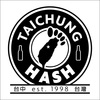How to Set a Hash Trail
|
Finding the Run |
It generally takes a minimum of 4-5 recce (reconnaissance) trips to put together a quality run.
|
Pre-run Preparation |
The Start
Flour, Chalk and/or Shredded Paper Hares are responsible for bringing sufficient amounts of chalk, flour, or shredded paper to the run. The choice of marking material is up to the hares, but thought should be given to terrain and weather.
|
Hash Marking |
|
Beer Checks |
Where possible, a beer check should be set on the trail. A beer check should be placed at a convenient point anywhere from the half-way point of the trail to within the last quarter of the trail, and should be planned ahead of time. It is the responsibility of the hares to get a cooler with beer and soft drinks from the Ale Master.
|
Bash |
The hares should try and locate a suitable bash location near the run site. If this is not available, a bash location in Taichung or other location can be agreed on by consensus of the hash members.
|

